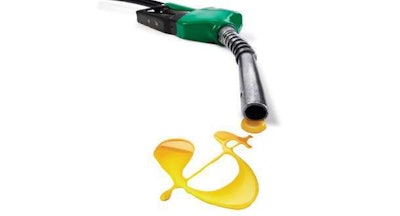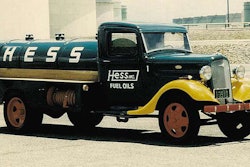Completing its assessment of last year’s performance, the U.S. Environmental Protection Agency (EPA) reported this month that 2014 model year light trucks reached a record average for fuel efficiency. The new report also reveals that automakers beat greenhouse gas (GHG) emissions standards for the third straight year.
 EPA says U.S. standards have spurred technology improvements that ultimately will save American families who purchase a new model year 2025 vehicle more than $8,000 in lifetime fuel costs.
EPA says U.S. standards have spurred technology improvements that ultimately will save American families who purchase a new model year 2025 vehicle more than $8,000 in lifetime fuel costs.Graphic: AAA
The findings were included in two reports: the annual report on fuel economy trends and a report on the auto industry’s progress toward meeting GHG emissions standards for cars and light trucks.
This year’s report finds that overall fuel economy remains steady at last year’s record high of 24.3 miles per gallon (mpg) for model year 2014. Truck fuel economy reached a record high of 20.4 mpg label average, a 0.6 mpg increase from last year and the second largest increase in 30 years.
However, on a fleet-wide basis, this higher truck fuel economy was offset by a 5 percent increase in truck market share. In addition, the report finds that the market is adopting fuel efficient technologies such as turbocharging and advanced transmissions at a faster pace than EPA projected when the standards were finalized.
The Greenhouse Gas Manufacturer Performance Report concludes that for model year 2014, manufacturers exceeded current GHG standards by 13 grams of CO2 per mile, or about 1.4 mpg. In the last 10 years, fuel economy has increased significantly, improving 5 mpg, or 26 percent, overall.
“For the third year in a row, manufacturers have exceeded the GHG emissions standards by a wide margin,” says Christopher Grundler, EPA’s director of the Office of Air Quality and Transportation. “It’s clear that our standards are working, spurring technology and innovation, and we are on track to achieve significant greenhouse gas reductions.”
EPA estimates that, through 2014, the GHG emissions standards have resulted in reducing cumulative emissions by roughly 60 million metric tons of CO2, roughly the amount of GHGs emitted from electricity use from over 8 million homes in one year.
These standards, according to EPA, will ultimately save American families who purchase a new model year 2025 vehicle more than $8,000 in lifetime fuel costs. EPA contends that the program in total will save Americans $1.7 trillion in fuel costs, will reduce U.S. fuel use by 12 billion barrels of oil, and reduce GHG emissions by 6 billion metric tons.
In 2012, EPA and the Department of Transportation began implementing standards projected to double new vehicle fuel economy by 2025 and cut new vehicle GHG emissions by half. Because of this program, EPA reports that consumers have many more choices when shopping for vehicles with higher fuel economy and lower CO2 emissions than they did just five years ago.
The Fuel Economy Trends report tracks average fuel economy of new cars, light trucks and SUVs sold in the United States.











